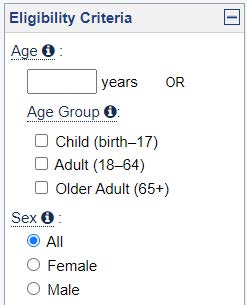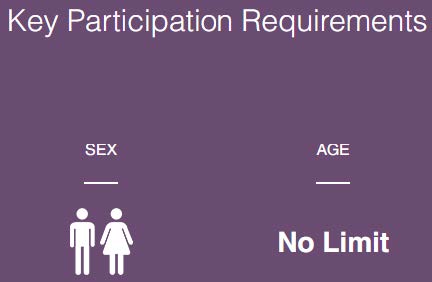
When We Tri(al) by TOUCH, The Black Breast Cancer Alliance has partnered with Carebox to provide Breasties, caregivers, and the entire Black community with an easy way to search and match to breast cancer clinical trials.

In the previous blog post, we presented the most important question on the mind of patients, families, and caregivers when considering clinical trials: “what treatment options do you have for me (or my loved one)?”
We explained that on the websites of larger pharm companies, there is often a presentation of their clinical trials in the form of a “clinical trial finder” intended for patients. Smaller biopharma companies will often send patients to the ClinicalTrials.gov website which is (among other things) the most popular “clinical trial finder” available online today.
We noted that while most of these clinical trial finders will let you do some whittling down of the clinical trials that are potentially relevant, they generally do a very poor job of answering the question most on the mind of patients (and those searching for trials on their behalf): “what do you have for me?”
The reason they aren’t answering that question, we explained, is that they aren’t enabling patients to search based on the eligibility criteria – the list of requirements that a patient must meet to participate in the trial (“inclusion criteria”) and a list of disqualifying things a patient might be/have (“exclusion criteria”).
We asked: “why not?” – and we promised to answer that question in this blog post…
Why aren’t the eligibility criteria of clinical trials searchable? The short answer is: because that’s not where the light is.
It’s not entirely correct that eligibility criteria are not searchable. Having the condition that is being studied in the clinical trial is part of the eligibility criteria. And that is almost always searchable.
What is also searchable when it comes to eligibility criteria are the age and sex of allowed participants. In fact, if you go to the ClinicalTrials.gov website and look at its filters under “Eligibility Criteria” that is exactly what you see: Age and Sex. There’s a new prettier version of ClinicalTrials.gov coming soon, but it has the same substance including that what is shown under “Eligibility Criteria” is age and sex.


Naturally, then, when you come across a clinical trial finder like the one from Bayer that we noted in the previous blog article, you’ll see that age and sex are dutifully translated as “Key Participation Requirements”.
Now, if you have ever considered a clinical trial treatment option for you or your loved one, you are probably puzzled and are asking yourself: do they really think that age and sex are the key participating requirements for me to determine eligibility for this trial?
Those are the requirements? Not the stage of my disease, my previous treatments, or my other conditions? Nothing about my clinical or genomic profile or my health record – just what’s on my driver’s license? That’s the key to knowing if a clincial trial has a relevant treatment option for me or not?
It’s true that some trials are only for childen (they usually say “pediatric” in the title or description) and some are only for the elderly. And if you don’t have a prostate you can’t participate in a clinical trial for prostate cancer. But the vast majority of trials don’t care about your age beyond a very broad “18 – 100” range. And the vast majority that aren’t specific to a body part that only men or women have, don’t care if you are a man or a woman.
So, searching for clinical trials based on sex and age is about as “not key” as it gets.
There’s a joke/tale that is so well-known it has its own Wikipedia page and is officially a “thing”: the Streetlight Effect. Here’s how Wikipedia tells it (citing a book – you can find the citation there):
A policeman sees a drunk man searching for something under a streetlight and asks what the drunk has lost. He says he lost his keys and they both look under the streetlight together. After a few minutes the policeman asks if he is sure he lost them here, and the drunk replies, no, and that he lost them in the park. The policeman asks why he is searching here, and the drunk replies, “this is where the light is”.
This is a great parable for what is happening on clinical trial finders today.
Searching for a clinical trial by age and sex and considering them “key eligibility criteria” is looking for the “keys” where the light is. Information about age and sex is available as discrete data fields in ClinicalTrials.gov and are thus the small part of the eligibility criteria that are “where the light is”.
Where the keys need to be found, is in the true eligibility criteria of the trial – but it’s very dark there.
Eligibility criteria are disclosed on ClinicalTrials.gov – and that is the main role of ClinicalTrials.gov, to support mandatory disclosure of clinical trials information – in a way that is not searchable. The inclusion and exclusion criteria are listed as free-text bullets without standardization of any kind. You can look for keywords in the text of the eligibility criteria, but that is largely useless to get the answer to the question of which clinical trials are potentially relevant.
To turn the eligibility criteria of a clinical trial into something searchable is quite challenging. We know this at Carebox – because addressing that challenge is a big part of what we do. To explain how we do it we first need to present the concept of “pre-screening” for clinical trials. And we’ll start with that in the next blog post.

When We Tri(al) by TOUCH, The Black Breast Cancer Alliance has partnered with Carebox to provide Breasties, caregivers, and the entire Black community with an easy way to search and match to breast cancer clinical trials.

Now patients, caregivers and healthcare professionals have an easy and effective way to search for and match with gastric cancer clinical trials.

Clinical trials continue to experience a paucity of diversity, but it will take a multipronged approach to infuse DEI into research.

Newest Carebox Connect Clinical Trial Sponsor Website Helps Mirati Therapeutics Deliver on Its Commitment to Patient-Centricity

THANC Guide resource center for thyroid, head and neck cancer patients will now feature Carebox Connect for clinical trial search and matching.

Carebox to help LCRF advance lung cancer research by making it easier and more effective for patients, caregivers and healthcare professionals to identify relevant lung cancer trials.

Why aren’t the eligibility criteria of clinical trials searchable? The short answer is: because that’s not where the light is.

Now patients, caregivers and healthcare professionals have an easy and effective way to search and match to scleroderma clinical trials.

Clinical trial websites are not providing the answer to the question that matters most to patients.

CVS Health is winding down its clinical trials business, with a full exit expected by December 31, 2024, the company confirmed to MedCity News. But decentralized clinical trials still have an important role to play, said Brian Weiss, CEO of Carebox.

An invitation to shape how patients find clinical trial treatment options.

Pilot of EHR-embedded clinical trial matching to enhance diversity in cancer research set to begin at two hospital systems in Texas and West Virginia.

Carebox Connect ™ empowers patients, families, and their physicians to find treatment options only available in clinical trials.
© Copyright 2023 by Carebox Healthcare Solutions, Inc.
We strive to answer all inquiries within one business day.

We strive to answer all inquiries within one business day.

Are you sure you would like to leave the Carebox website? If you press ‘Continue’ you will be directed to a different website. Carebox is not responsible for any content on the site you are about to visit, nor the privacy policy of that website.

Please share your feedback ideas and suggestions to help make Carebox Connect more useful to patients, doctors, trial sites, and/or trial sponsors. No idea is too small and no input is insignificant.
Your message was submitted successfully. We will get back to you within the next few days.
